A mixed bag.
Desktop and laptop hardware:
When I started using Apple hardware in 1999 it was a disgust with Windows and PCs which drove there. My first iMac was the classic G4 ‘screen on a stick’ design, an ergonomic bull’s eye, which is still in use to this day. It was a revelation, never locking up, recognizing all manner of peripherals instantly and came with an OS which was night-and-day compared to the horrors of Windows.
As my time becomes more valuable daily , seeing as it’s a pot amortizing at an accelerating rate, I see no way that I would revert to Windows, something I have not touched since 2004 when I commenced self-employment. All of my work and computing leisure are spent on Macs or iOS devices. If my son so much as mentions Windows, I threaten him with my will and an eraser.
A decade ago that great CEO/marketer/carnival barker/charlatan/thief Steve Jobs was well into the AAPL revival, which peaked on his death when the business became the most valuable public company on earth. I published a picture taken the day of his death in downtown San Francisco and it remains as moving today as it was then:
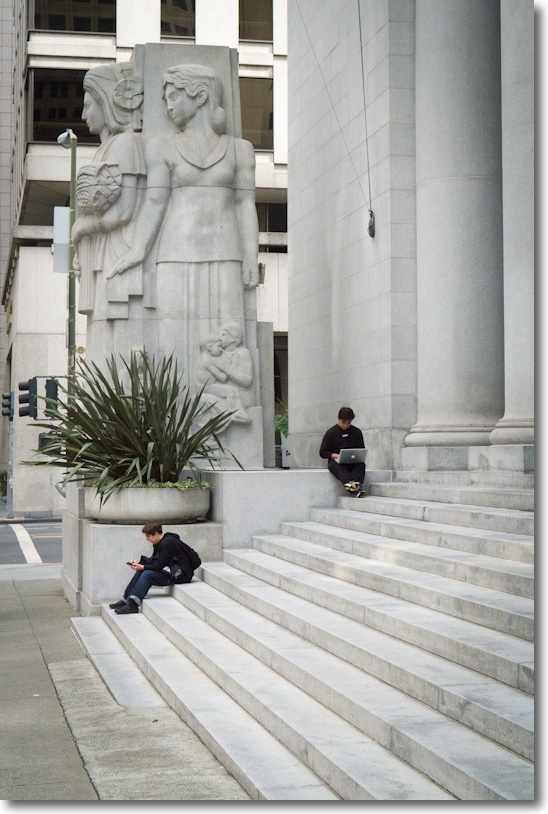
Pacific Stock Exchange building, Pine and Sansome, San Francisco.
G3, kit lens @ 71mm, 1/1250, f/7.1, ISO 1600
You can read that piece here.
But, I’m afraid to say, since then Apple has gone nowhere as regards the pro video/audio/photography user set. Sure they sell lots of phones, but for pros it’s all been downhill. The obsession with thinness and looks, driven by designer Jony Ive, has lost its governor on reality, one Saint Steve. With everything but looks sacrificed on the Altar of Thin, today’s iMac 5K is every bit as bad when it comes to thermal management as the iMacs which ushered in the Intel era, purportedly running CPUs much cooler than the IBM G4/5 ones which preceded them.
However, bad as the early Intel iMacs were, if any iMac takes the prize for multi-purpose machine, it has to be the pre-Intel G5. Computer and toaster in one. My new one was sold so fast that I think I left the bread in it – its fans would roar at the slightest provocation and, often as not, the machine would also leak coolant all over the place as soldered joints melted in the inferno. An abomination. It looked nice, of course.
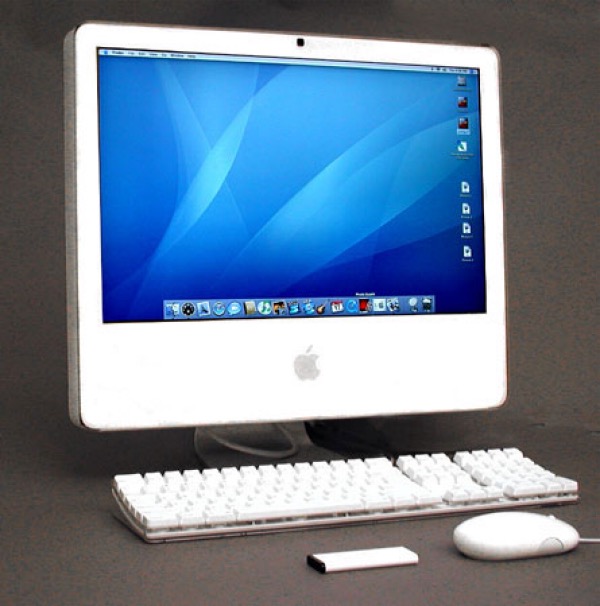
The worst Mac of the past decade – the iMac G5.
Thus, when I wrote Putting out the Garbage five years ago I simultaneously abandoned desktop Macs in favor of a Hackintosh, a machine using common PC parts but hacked to run OS X. The machine was a blast to build, the hacking was a nice challenge (and sweet revenge), fast, infinitely upgradable and robust as it comes except …. when Apple made changes to OS X. Each saw the Hackintosh gurus scrambling for a fix as a host of new things was broken. After a while this began to get really old. That emotion coincided with the classic Mac Pro becoming very affordable on the used market and the 2009 model I specialize in upgrading is easily modified to current performance at modest cost.

The best Mac of the past decade – the 2009 dual CPU Mac Pro.
And the Mac Pro, introduced in 2006, really was a nod to Apple’s roots, comprised of movie makers, sound artists and photographers. Not cellphone dabblers but rather people who used the Mac Pro to make a living, with all the attendant demands on robustness and coolness (literally) under pressure. And it bears repeating – for heavy processing, especially video, you must be certifiable to use an iMac. Only the classic or new Mac Pros (the latter also thermally well managed, albeit at a high price) are up to the task.
And even in the new Mac Pro you see the invidious creep of form over function in Ive’s designs. I mean, all the storage is external? The GPUs cannot be upgraded? The CPU is difficult and costly to upgrade? And it looks like a garbage can? What was Ive thinking? And it’s doubly tough for those working pros who really do not want to build Hacks or join the PC world, preferring to work on their clients’ projects rather than spending time endlessly debugging their machines.
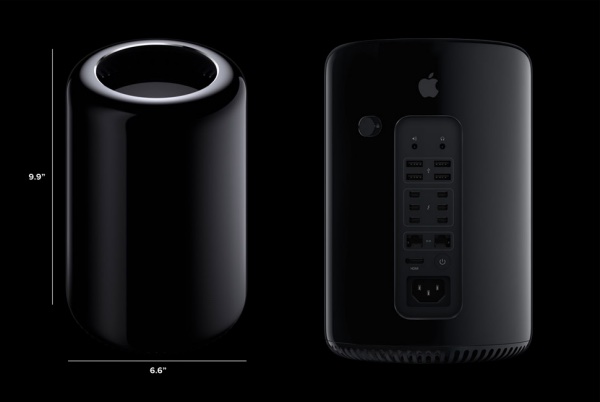
The 2013 Mac Pro – form and function. but at a price.
The other change to Macs since the white Intel iMac machines melted down is that every Mac screen out there has a ghastly, glossy finish. There used to be an option for the MacBook Pro of a matte screen, but I have not the energy to check the fine print to determine if that still exists. Even their Cinema Displays are glossy. Again, what are they thinking of?
In fairness, Apple’s laptops are superb in every way. Take into account annual depreciation of maybe 20% and an annual or biennial upgrade is perfectly feasible economically for just about anyone. People who talk of the ‘Apple premium’ probably failed finance classes. Then again, they mostly use PCs. Every Mac today runs Windows if that’s your thing, many buying them for just that purpose, they are fast and so long as you do not overtax them, stay reasonably cool. Battery lives only get better, keyboards and trackpads are the best in the business and there seem to be no reports of fundamental design flaws. Even the glossy screen intrudes little for who, after all, would use that for serious work? You switch to closed lid mode and procure a mouse, keyboard and (non-Apple branded) display with a matte screen. Just lay off the heavy video stuff.
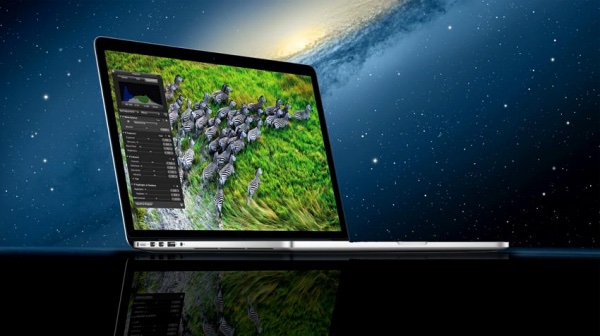
The MacBook Pro – Retina Display. The best laptop in the business.
So if the pro user has a beef with Apple’s hardware it’s easy to see why.
OS X:
More troubling is the direction OS X has taken. I recall all the bloatware which PCs came with when new and while OS X is not in that league, we are constantly seeing insanely frustrating changes which seem to deny the platform-agnostic nature of the Unix core on which OS X is built.
OS X arguably peaked with Snow Leopard OS 10.6 in 2008 which took Leopard, shook out all the bugs, introduced nothing new and was lean and mean. That’s what I call software development. Since then we have had Lion, Mountain Lion, Mavericks and Yosemite and none has added anything useful over Snow Leopard, except for a lot of feature bloat and sheer stupidity (making icons monochrome in Finder, for heaven’s sake? Hiding Library directories? Translucent menus? Backward scrolling? The arrant idiocy of the ‘fly away’ option on cursor hover over a dock icon?). And you really want to take phone calls on your computer or hop off the desktop and take over on the laptop in mid-sentence? Really?
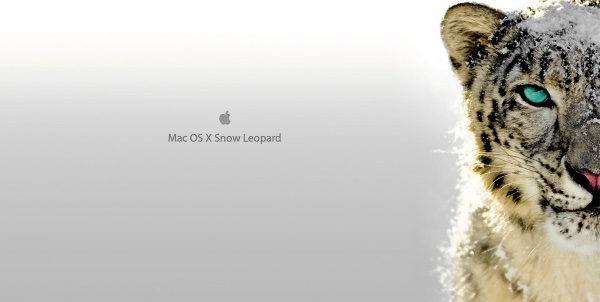
Snow Leopard – the best OS X ever.
It’s as if there is a child with Attention Deficit Disorder running OS X development, ignorant of when it’s best to just leave things alone. And the constant dumbing down, directionally pointing to iOS, is insanely frustrating, no less than the constant rounds of application upgrades with every major release. I do not want OS X to look like my iPhone and know no one who does. So far that idiot child has not managed to break the main reason for using OS X in the first place, its rock solid reliability, but give him enough room and he will get there. Apple, please, just leave OS X alone. No one ever bought a Mac because a new version of OS X just came out and no one ever will.
The iPhone:
Today’s Apple is a cell phone maker. Nearly all of its revenue and net profit is from the iPhone. The iPad is doomed to no growth owing to its long life cycle and the tablet craze has rather faded.
And in that regard it’s fair to say that the original iPhone was the technological product of the new century so far. I bought mine on July 31, 2007, the day it became available, doing so in the college town of San Luis Obispo where the predominantly student population had either not seen the keynote some six months earlier or was too stoned to go to the Apple Store. I queued all of 5 minutes, with the news full of mile long lines elsewhere. Some people, whose time was worth nothing at all, even lined up in San Francisco. Only in America do the unemployed line up for cell phones.
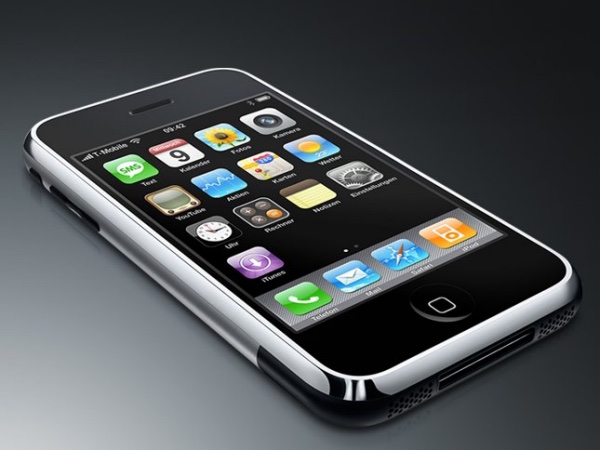
The first iPhone. Apple’s greatest product ever.
Sure, later iPhones added the App Store, sharper screens, 3G, 4G, a better camera and on and on. And, of course, they became thinner and thinner. But inside every iPhone is that first iPhone with its no less brilliant operating system, iOS. iOS may see constant tinkering by Cupertino but, unlike with OS X, you are free to largely disregard bloat features you do not need. And in the iPhone 5 and 6 it’s no exaggeration to say that the camera is superb. The iPhone destroyed Blackberry and Nokia, arguably made Samsung (a work in progress, that one, as Sammy finds it increasingly difficult to steal/copy/clone), and bankrupted Nokia and Motorola. It will eventually destroy Canon and Nikon as camera makers.
Steve Jobs’s roll out presentation of the iPhone is perhaps the greatest display of marketing prowess ever and you can (and should) watch it here, even if your parents dropped you on your head when you were knee high to a grasshopper, leaving you hating all things Apple. “A widescreen iPod with touch controls, a revolutionary mobile phone, and a breakthrough internet communicator. Today Apple is going to reinvent the phone”. Genius. And true. As thrilling to see today as it was in early 2007. And, of course, “You had me at scrolling”.

The author’s iPhones – now and then.
Carnegie, Rockefeller, Ford, Westinghouse …. Jobs. A pantheon of American capitalists and originals all.
Here’s hoping:
So my hope for Apple is that they leave OS X alone, at least make some effort to maintain a professional computer product in their increasingly bloated product line (Gil Amelio, anyone?) and continue to improve the camera in the iPhone. Of these three, only the last is a realistic expectation, and that’s sad.
Oh, that and have its CEO stick to talking about what he is paid to do during business hours, not about what he does in his bedroom. And enough already with that dumb watch.